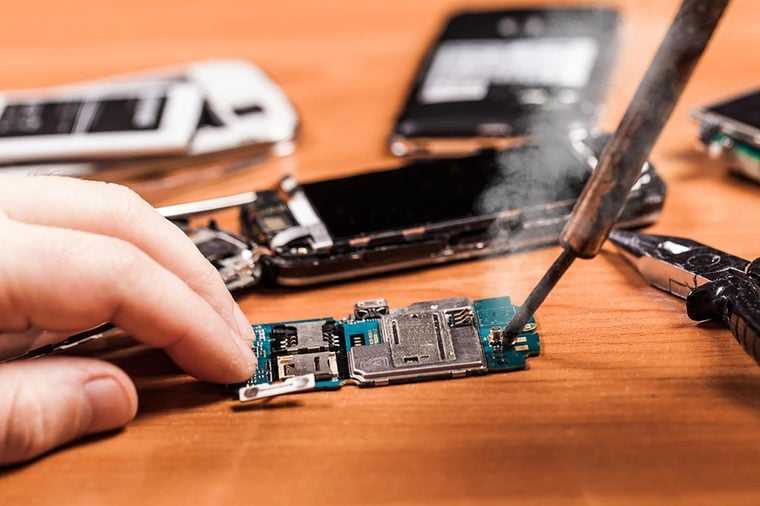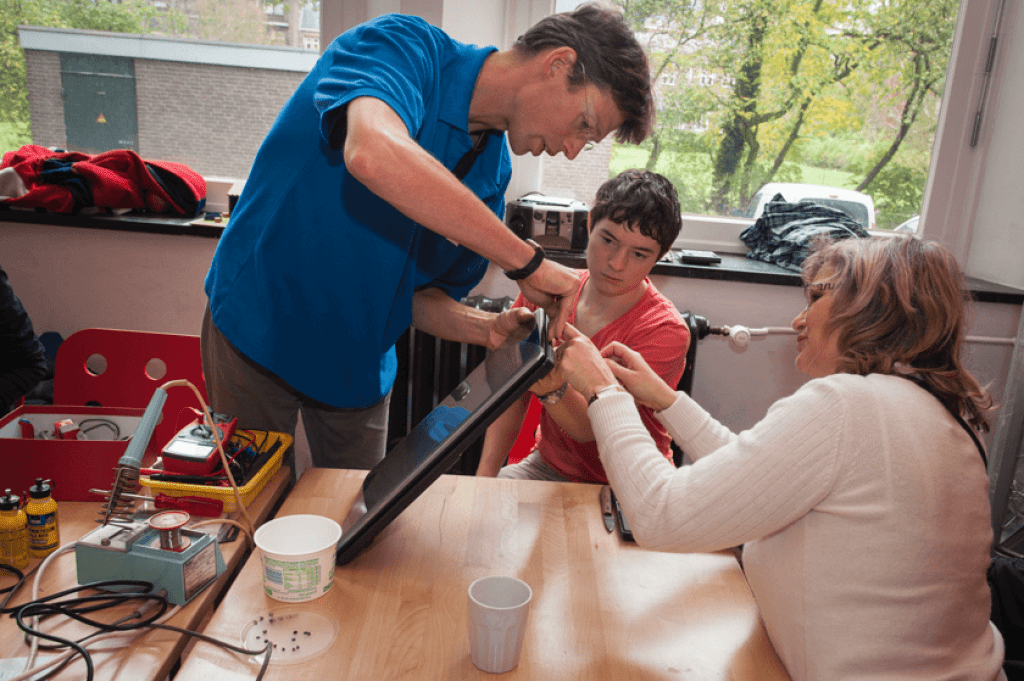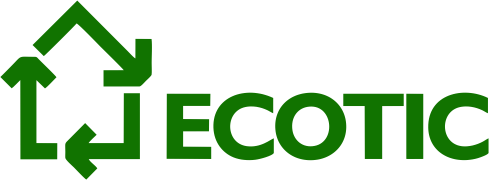Electrical and electronic waste is one of the fastest growing streams in Europe, with more than 2020 million tonnes collected in 4,7. Of these, only 40% were recycled[1]. Studies conducted in several European countries have shown that approximately 20-30% of electrical and electronic equipment (EEE) that ends up in the recycling stream as waste electrical and electronic equipment (WEEE) is functional and could be used for a longer period[2].
Regarding Romania, the ECOTIC study on the topic The habits of the Romanian population regarding small electrical equipment reveals the fact that 10,5% of the small equipment in Romanians' homes are kept even if they are unused or broken[3].
 The European context
The European context
According to a Eurobarometer survey, 77% of consumers in EU Member States prefer to repair their goods at the expense of purchasing new products[4]. However, as a result of the lack of service and the increased cost of repairs, they are forced to dispose of them and replace them with new ones.
In March 2023, the European Commission presented a new proposal to promote reuse of electrical and electronic equipment, ensuring the right to repair both during the warranty period and upon its completion. In this context, repair becomes a key element in the EU's plan to achieve a circular economy by 2050, under the European Green Deal.
The importance of reusing electrical and electronic equipment
On the entire value chain of EEE, from the extraction of valuable ores (iron, copper, gold, etc.), found in their composition, to production, transport, sale, consumption and disposal, the quantities of resources used are significant, the system generating a strong ecological footprint. Consequently, extending the useful life of products would bring environmental and economic benefits.
Although the vast majority of EEE lends itself to reuse, some of them, such as smartphones and laptops, can be reused regardless of their age to have a positive impact on the environment, while others, such as washing machines or televisions , can be reused for a specified period of time.
The main barriers to the reuse of electrical and electronic equipment are the reluctance of manufacturers regarding the reliability of refurbished equipment, the inadequate collection infrastructure for the sorting of WEEE for reuse, but also the attitude of consumers, especially the fears related to reliability and safety.
European good practices
Several European states have included provisions in their national legislation to support and promote the repair and reuse of electrical and electronic equipment.
France is the European country that has taken the most important step in promoting the right to repair by implementing a "repair index" for electronic products, which came into force in January 2021. It is the first national label of its kind to show consumers the ease of that a piece of equipment may or may not be repaired. At the same time, French law regulates the ecological design of EEE in order to facilitate reuse, repair, disassembly and recovery of raw materials.
As early as 2017, Sweden introduced tax breaks, reducing taxes for repairing equipment such as refrigerators and washing machines. Similarly, in certain cities in Austria, there are regional funds to subsidize electronics repair.
Spain has set a mandatory national target on the reuse of large electrical equipment and small IT and telecommunications equipment. As of 2018, Spanish law requires that 3% of large appliances and 4% of IT equipment be refurbished, and collection points are required to have a dedicated space for equipment that can be reused. At the same time, in 2021, the government approved the extension of the statutory warranty period for EEEs to three years and the increase of the mandatory minimum period that manufacturers must hold spare parts to 10 years.
In addition to government initiatives, local communities, companies and civil society have also taken steps towards the circular economy.
 In the Netherlands and beyond, Repair Cafés they are meeting points where citizens bring broken products, including household appliances and IT equipment, and a team of volunteers helps them repair them. This way, they can avoid the rapid cycle of buying, using, disposing of, and buying a new product, while creating a community of troubleshooters. There are more than 1.500 such centers worldwide.
In the Netherlands and beyond, Repair Cafés they are meeting points where citizens bring broken products, including household appliances and IT equipment, and a team of volunteers helps them repair them. This way, they can avoid the rapid cycle of buying, using, disposing of, and buying a new product, while creating a community of troubleshooters. There are more than 1.500 such centers worldwide.
iFixit, is an international partnership between repairers and citizens who have created an accessible and editable database of repair manuals. This platform offers free access to more than 50.000 manuals that enable the repair of electrical, electronic or vehicle equipment.
Fairphone, a social enterprise based in the Netherlands, develops mobile phones with less impact on the environment. They make it available to users phones with modular design which allow for easier customization, upgrade and repair, being a viable alternative to smartphones on the market.
In Romania, in 2020, the Romanian National Standardization Organization (ASRO) completed the Romanian translation of to the international standard for repairing electrical and electronic equipment – EN 50614:2020, at the initiative and with the technical support of ECOTIC and the Circular Economy Coalition Association (CERC).
Association Workshops without Borders is one of the few centers focused on the reuse of electronic equipment. In partnership with ECOTIC, the organization prepares functional IT equipment from donations for reuse and then donates them to schools, NGOs or placement centers in disadvantaged areas. In the year 2022, over 15 IT equipment and other equipment supporting the digitization of disadvantaged areas were donated and refurbished with the support of ECOTIC.
Many of these initiatives, both at the state level and at the societal level, can also be taken over in Romania, thus making troubleshooting and reuse services available to consumers. Their integration into the mainstream of society will lead, in the medium and long term, to changing consumption behavior and supporting the circular economy.
[1] https://www.destatis.de/Europa/EN/Topic/Environment-energy/E_Waste.html
[2] Bovea, María D., Valeria Ibáñez-Forés, Victoria Pérez-Belis, Pilar Quemades-Beltrán. Potential reuse of small household waste electrical and electronic equipment: Methodology and case study 2016. https://files.ifi.uzh.ch/hilty/t/Literature_by_RQs/RQ%20146/2016_Bovea_Ib%c3%a1%c3%b1ez-For%c3%a9s_P%c3%a9rez-Belis_Reuse_small%20household_waste_electrical_electronic_equipment.pdf
[3] ECOTIC. The habits of the Romanian population regarding small electrical equipment. 2022. www.ecotic.ro/wp-content/uploads/2022/10/Studiu-web-min.pdf
[4] https://www.europarl.europa.eu/news/en/headlines/society/20220331STO26410/why-is-the-eu-s-right-to-repair-legislation-important
